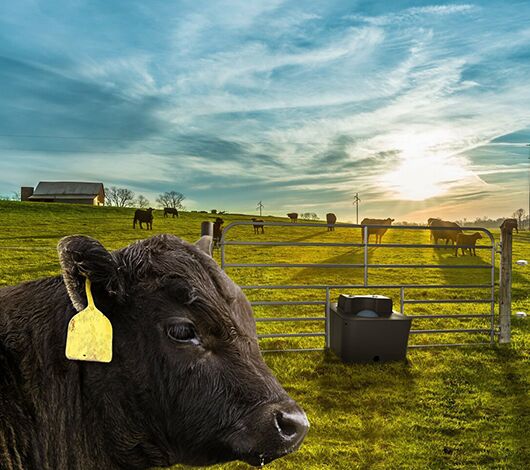Keep cattle cool with these simple heat-beating strategies
Take these simple steps to ensure cattle stay cool and comfortable during the sweltering days of summer
Saturday, 01 January, 2022

The months of July and August are traditionally the hottest time of the year in the northern hemisphere. During these critical warmer periods, it's important producers take action to keep cattle cool and comfortable and mitigate the potential animal performance losses typically seen when temperatures rise.
“The problem with cattle and extreme heat is they don’t have the ability to sweat quite as well as other animals,” says Dr. Ron Gill of Texas A&M AgriLife Extension. “There is some sweating happening, but it’s not quite enough. Most of the heat is lost through respiration.”
A veteran extension livestock specialist, Gill provides programming on livestock well-being and low-stress livestock handling to producers across the state of Texas.
Gill explains the negative effects of heat stress cause significant declines in livestock production, fertility, and immunity with symptoms usually sets in when the temperature-humidity index reaches the high-80s. In addition, factors like the amount of direct sunlight, precipitation, wind, night-cooling, and possible exposure to fescue endophyte can also compound the situation.
To identify cattle suffering from moderate to severe heat stress, Gill describes, producers should look for animals which resemble those with a look similar to an animal dealing with a bad respiratory disease.
“They look like they can’t get enough air. Normally their head goes down, they take a wider stance than normal, and at certain points, they’ll even start open-mouthed panting which is totally unnatural for a cow,” says Gill.
Gill points out, it’s important to remember, even heat-tolerant breeds such as Brahman and Brahman-influenced cattle, are susceptible to the adverse effects of extreme heat. Therefore, measures should always be taken to make sure all livestock are comfortable when a heat wave occurs.
In general, cattle keep cool in hot weather in three ways: reducing activity (i.e. grazing less), seeking out shade (if available), and drinking water.
“If they have access to a pond or other water body, they will get in it,” says Gill. “That’s one reason we have to fence a lot of ponds off, to keep them from polluting the water they have to drink.”
Instead of letting cattle wallow in waterways and foul their drinking source, Gill says, “The biggest aspect is to have access to good, clean water to help cattle cool and regulate their internal temperature.”
Research from Oklahoma State University has shown on average, a typical 1200-lb spring calving cow (not counting the calf) requires about 27 gallons of water each hot summer day. Gill advises producers lay out pasture watering systems in a way which provides all animals with equal opportunity to drink. Gill notes side benefits of this practice are an increase in grazing efficiency and better livestock distribution. If possible, he suggests multiple watering points be placed in each paddock and if necessary, shade structures over water sources to keep water cool.
When it comes to shade, Gill says, “There has been work that shows there is no increase in animal performance from providing shade, but we all like to get in the shade when it’s hot. From a cow comfort standpoint, I think they should have access to some kind of shade.”
Shade options might include letting trees grow in certain areas of your pastures or possibly even using portable shade structures. Portable shade covers, Gill notes, are easily moved with an ATV and specially designed to allow the shade to move with the sun throughout the day, so the same area isn’t continuously under roof.
For livestock in confined operations or periodically housed indoors, Gills recommends producers construct facilities which utilize cross-ventilation to optimize air flow through the building.
“It creates an almost vortex effect with the design and eliminates the need to have fans,” says Gill. “That, of course, means there needs to be some breeze to work, but most of these facilities have really good ventilation if designed properly.”
Lastly, Gill says producers should avoid working animals if they know a heat wave is coming. Cattle overheat easier during times of high heat and humidity and increased activity can lead to heat stress.
“Manage how much you move and work with animals during these bouts,” says Gill. “Get your work done before the heat wave or be prepared to make sure you’re done by eight or nine o’clock in the morning.”
By taking these simple steps to ensure cattle stay cool and comfortable during the sweltering days of summer, Gill says livestock will be happier and producers will rest easier knowing their animals continue to be healthy and productive despite the heat.
Authored byJesse Bussard, an agricultural writer based in Bozeman, Montana.